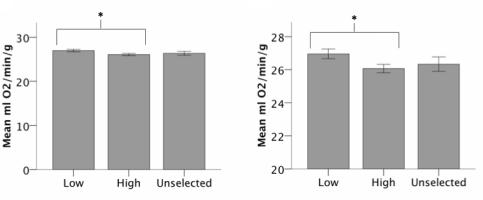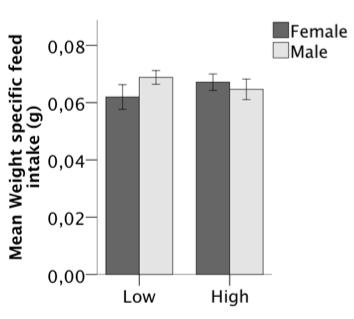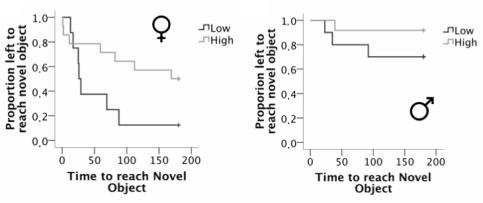Results
Basal Metabolic Rate

A tendency towards a line effect was found in BMR and a post-hoc test found that low and high fear individuals differed so that low fear individuals had a higher BMR.

BMR correlated significantly with the fear score that was determined through a standardised behavioural test. Individuals with a low fear score had a higher BMR. Most interesting was the finding that there were no individuals that had both a low fear score and a low BMR.
Feed Intake

While no effect of sex or selection line was found in the feed intake measurement, there was an interaction effect. This could point towards a better feed conversion ratio in chickens selected on low fear of human. And it shows that males and females are affected differently by selection on low fear of human.
Novel Object

The selection lines differed significantly in their response in the novel object test. Similarly to the findings in the feed intake measurements, males and females were not affected in the same way. Females were overall more bold and differed more in their response compared to the males.
Egg weight

Egg weight was significantly hihger in the low fear individuals. This indicates that low fear individuals have more resources to put into their reproduction even thogh they have a slightly higher BMR while they do not consume more feed.
Overall the study found that selection on a low level of fear of human affects other traits not directly selected for, which is in line with previous studies. Low fear individuals have a higher BMR, lay larger eggs and are bolder in novel object test situations.
Responsible for this page:
Director of undergraduate studies Biology
Last updated:
06/10/14
